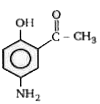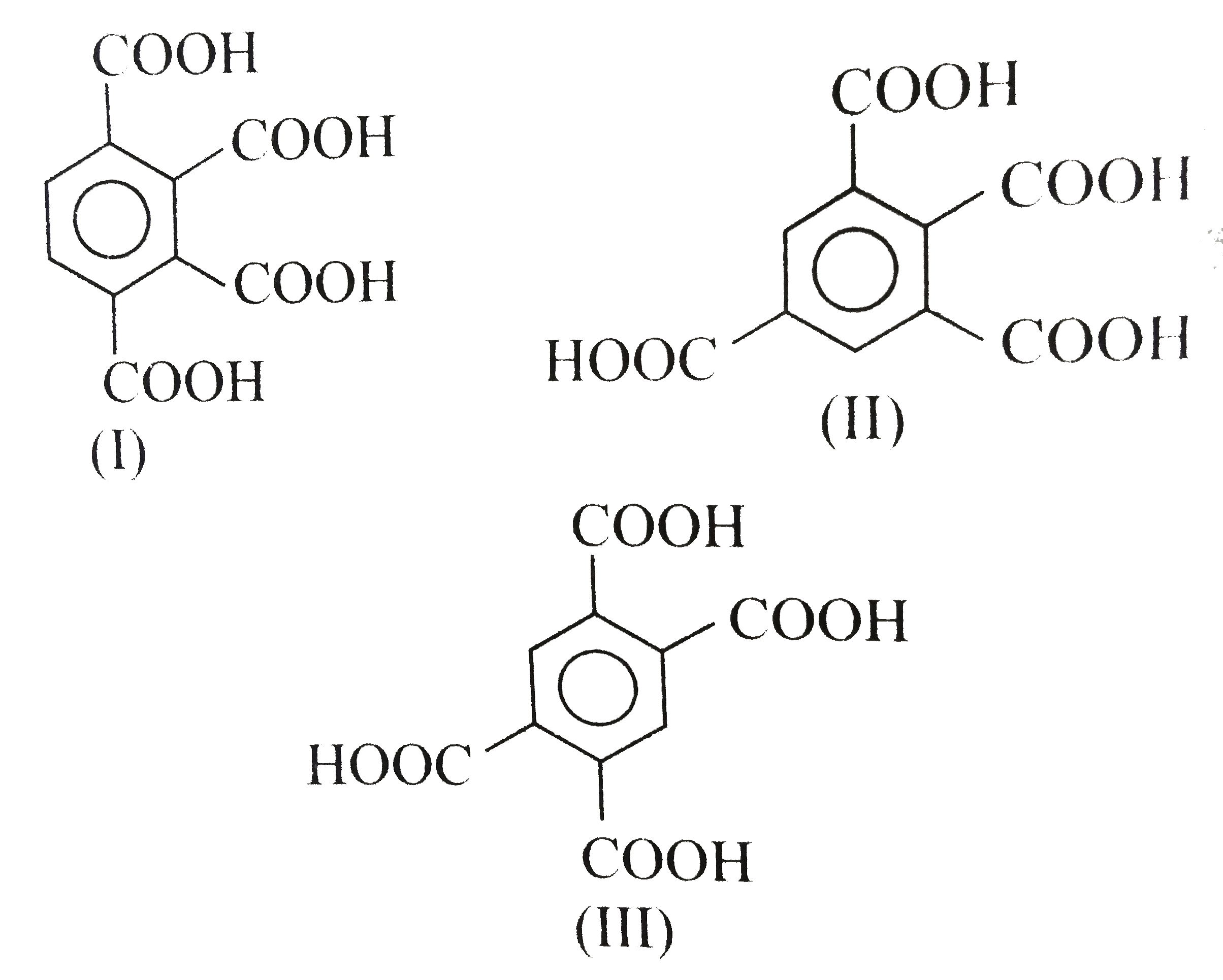The condensation reacton between one equivalent of acetone and two equivalents of benzaldehyde in presence of dilute alkali leads to the formation of
benzalacetophenone
benzylideneacetone
dibenzylideneaceton
benzoic acid and acetic acid
The correct Answer is:C
To solve the question regarding the condensation reaction between one equivalent of acetone and two equivalents of benzaldehyde in the presence of dilute alkali, we will follow these steps:
1. Identify the Reactants:
- Acetone (CH₃COCH₃) is a ketone.
- Benzaldehyde (C₆H₅CHO) is an aldehyde.
- We have one equivalent of acetone and two equivalents of benzaldehyde.
2. Understand the Reaction Type:
- The reaction is a condensation reaction, which typically involves the combination of two molecules with the loss of a small molecule, often water.
3. Reaction Mechanism:
- In the presence of dilute alkali (like NaOH), the acetone can undergo an aldol condensation with benzaldehyde.
- The base will deprotonate the acetone to form an enolate ion, which can then attack the carbonyl carbon of benzaldehyde.
4. Formation of the Intermediate:
- The enolate ion from acetone attacks the carbonyl carbon of one benzaldehyde molecule, forming a β-hydroxy ketone intermediate.
- This intermediate can then react with another equivalent of benzaldehyde in a similar manner.
5. Final Product Formation:
- After the formation of the β-hydroxy ketone, dehydration (loss of water) occurs, leading to the formation of an α,β-unsaturated carbonyl compound.
- The final product is dibenzylidene acetone, which has the structure:
C6H5CH=CH(CO)C=CHC6H5
- This compound has a central acetone unit flanked by two benzylidene groups.
Final Answer:
The condensation reaction between one equivalent of acetone and two equivalents of benzaldehyde in the presence of dilute alkali leads to the formation of dibenzylidene acetone.
---
- Acetone (CH₃COCH₃) is a ketone.
- Benzaldehyde (C₆H₅CHO) is an aldehyde.
- We have one equivalent of acetone and two equivalents of benzaldehyde.
- The reaction is a condensation reaction, which typically involves the combination of two molecules with the loss of a small molecule, often water.
- In the presence of dilute alkali (like NaOH), the acetone can undergo an aldol condensation with benzaldehyde.
- The base will deprotonate the acetone to form an enolate ion, which can then attack the carbonyl carbon of benzaldehyde.
- The enolate ion from acetone attacks the carbonyl carbon of one benzaldehyde molecule, forming a β-hydroxy ketone intermediate.
- This intermediate can then react with another equivalent of benzaldehyde in a similar manner.
- After the formation of the β-hydroxy ketone, dehydration (loss of water) occurs, leading to the formation of an α,β-unsaturated carbonyl compound.
- The final product is dibenzylidene acetone, which has the structure:
C6H5CH=CH(CO)C=CHC6H5
- This compound has a central acetone unit flanked by two benzylidene groups.
The condensation reaction between one equivalent of acetone and two equivalents of benzaldehyde in the presence of dilute alkali leads to the formation of dibenzylidene acetone.
Similar Questions
Reaction between benzaldehyde and acetophenone in presence of dilute NaOH is known as:
View SolutionWhen acetone is treated with excess of bezaldehyde in the presence of base, the crossed condensation add two equivalents of benzaldehyde and expets two equivalent of water and forms [x]. Identify the structure of [X] when [X] reacts with NH2OH how many stereoisomers are formed .
View Solution
Knowledge Check
p-aminophenol reacts with one equivalent of acetyl chloride in the presence of pyridine to give mainly:
A B
B C
C D
D
Carbonyl compound which contains α−H gives aldol condenation reaction in presence of alkaline medium. The reaction between two molecules of acetaldehyde take placeas follows in presence of base

Intramolecular aldol condensation reaction is given by
View SolutionAlkali metals oxide are obtained by combustion of the metals.Although Na normally gives Na2O2,it will take up further oxygen at elevated pressure and temperature to form NaO2.The per and superoxides of the heavier alkalies can also be prepared by passing stoichiometric amounts of oxygen into their solution in liquid ammonia.
The different alkali metal oxides can be distinguished by reaction with water.The superoxides reacts with CO2 and give oxygen gas.The stability of per and superoxides is based upon that larger cation can stablise larger anion, due to larger lattice energy.
Alkali metals dissolve in liquid ammonia.Dilute solutions are dark blue in colour but as the concentration increases above 3M, the colour changes to copper bronze and the solution acquires the metallic lusture due to the formation of metal ions clusters.The solutions of alkali metals in liquid ammonia are good conductors of electricity due to the presence of ammoniated cations and ammoniated electrons.However, the conductivity decreases as the concentrations increases, since ammoniated electrons and ammoniated cation associate.
Solution of sodium metals in liquid ammonia is strongly reducing
due to the presence of :
View SolutionAlkali metals oxide are obtained by combustion of the metals.Although Na normally gives Na2O2,it will take up further oxygen at elevated pressure and temperature to form NaO2.The per and superoxides of the heavier alkalies can also be prepared by passing stoichiometric amounts of oxygen into their solution in liquid ammonia.
The different alkali metal oxides can be distinguished by reaction with water.The superoxides reacts with CO2 and give oxygen gas.The stability of per and superoxides is based upon that larger cation can stablise larger anion, due to larger lattice energy.
Alkali metals dissolve in liquid ammonia.Dilute solutions are dark blue in colour but as the concentration increases above 3M, the colour changes to copper bronze and the solution acquires the metallic lusture due to the formation of metal ions clusters.The solutions of alkali metals in liquid ammonia are good conductors of electricity due to the presence of ammoniated cations and ammoniated electrons.However, the conductivity decreases as the concentrations increases, since ammoniated electrons and ammoniated cation associate.
On dissolving smaller (less than 3M) amount of sodium metal in
liquid ammonia at low temperature , which one of the following
does not occur ?
View SolutionAlkali metals oxide are obtained by combustion of the metals.Although Na normally gives Na2O2,it will take up further oxygen at elevated pressure and temperature to form NaO2.The per and superoxides of the heavier alkalies can also be prepared by passing stoichiometric amounts of oxygen into their solution in liquid ammonia.
The different alkali metal oxides can be distinguished by reaction with water.The superoxides reacts with CO2 and give oxygen gas.The stability of per and superoxides is based upon that larger cation can stablise larger anion, due to larger lattice energy.
Alkali metals dissolve in liquid ammonia.Dilute solutions are dark blue in colour but as the concentration increases above 3M, the colour changes to copper bronze and the solution acquires the metallic lusture due to the formation of metal ions clusters.The solutions of alkali metals in liquid ammonia are good conductors of electricity due to the presence of ammoniated cations and ammoniated electrons.However, the conductivity decreases as the concentrations increases, since ammoniated electrons and ammoniated cation associate.
Select the correct choice for alkali metal oxides.
View SolutionGive one good chemical test to distinguish between benzaldehyde and acetone.
View SolutionThree isomeric tetracarboxylic acids (I),(II), and (III) are given.

They can be distinguised by anhydride formation by treating with one equivalent and two equivalents of SOCl2.
Which tetracarboxylic acid on reaction with one equivalent of SOCl2 gives two isomeric monoanhydrides ?
View SolutionThree isomeric tetracarboxylic acids (I),(II), and (III) are given.

They can be distinguised by anhydride formation by treating with one equivalent and two equivalents of SOCl2.
Which tetracarboxylic acid on reaction with one equivalent of SOCl2 gives only one monoaanhydride ?
View Solution
